Identifying Damage to Concrete and Clay Roof Tiles
There are different types of damage that can take place on concrete and clay roof tiles (tiles), such as wind damage, mechanical damage, handling/installation damage, and wear/tear damage. During a roof inspection, it is important to be able to differentiate the damage in each one of these categories to properly reach a conclusion regarding the cause of the observed damage. It is common for people in the field to misinterpret the damage between each one of these categories.
Wind Damage
The typical damage that results from high winds is observed as displaced tiles, missing tiles, and broken tiles from debris impact, as shown below:
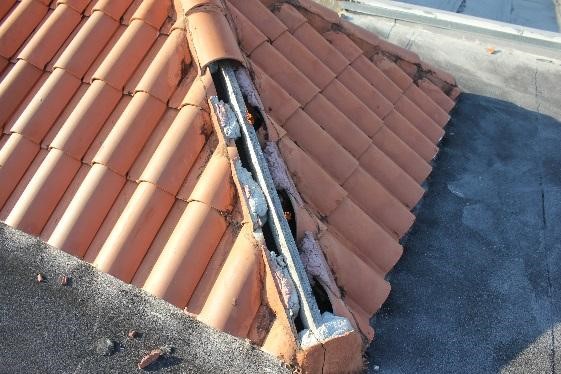
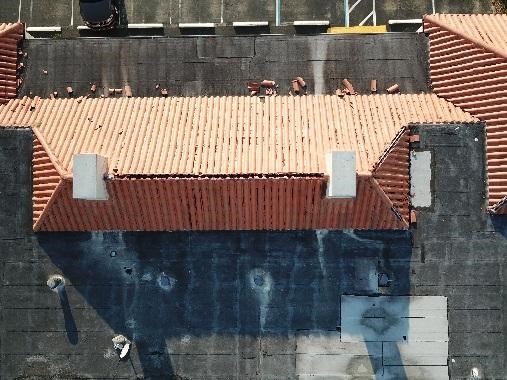
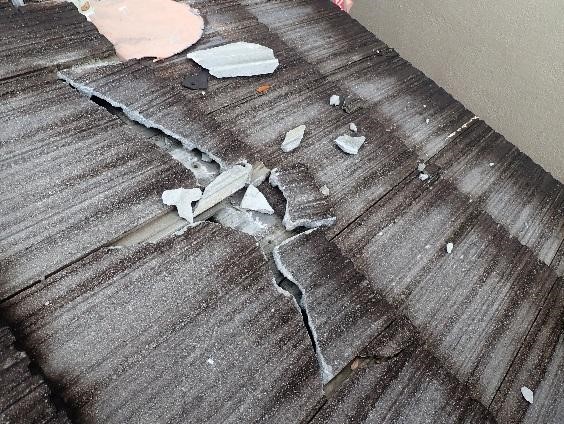
The areas of a roof most susceptible to wind damage are located on the perimeter of the roof, the ridges, and the hips, where wind pressures are greatest. As observed above, the missing and displaced tiles occur along the ridges and hips. It is important to note how high winds will lift the ridge and hip tiles and displace them, and not set the tiles back in their original locations.
Mechanical Damage, Handling/Installation Damage, and Wear/Tear Damage
The typical damage that results from mechanical damage, handling/installation damage, and wear/tear damage can be observed as foot traffic, broken field tile corners, and detached ridge and hip tiles, as shown below:
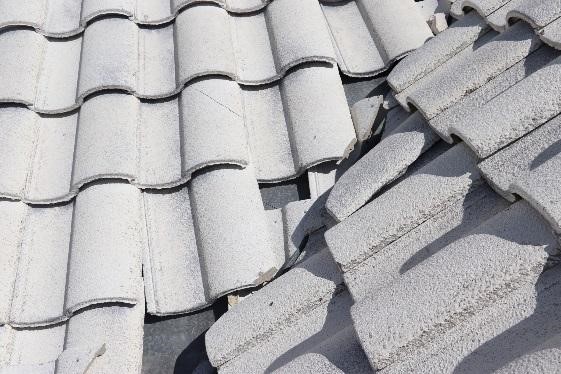
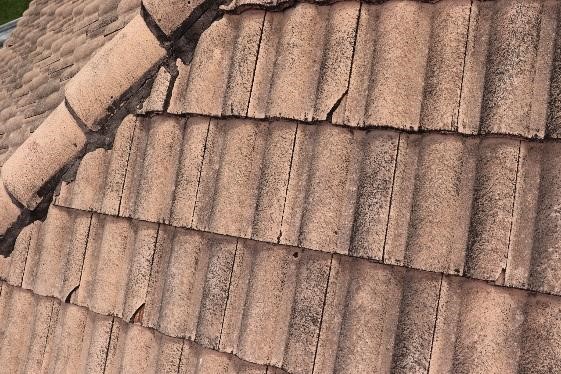
People tend to walk up a roof along the valleys, which results in the observed damage above. The Tile Roofing Institute recommends stepping at the bottom 3 inches of the installed tile, orienting your feet in a direction parallel with the ridge, and staying away from hips or valleys to avoid breaking cut tiles. The broken field tile corners are addressed in a technical brief published by the Tile Roofing Institute, where they are described as a shipping, and handling issue. Tiles can have hairline cracks that are not noticed during the original installation but show up as broken corners afterwards.
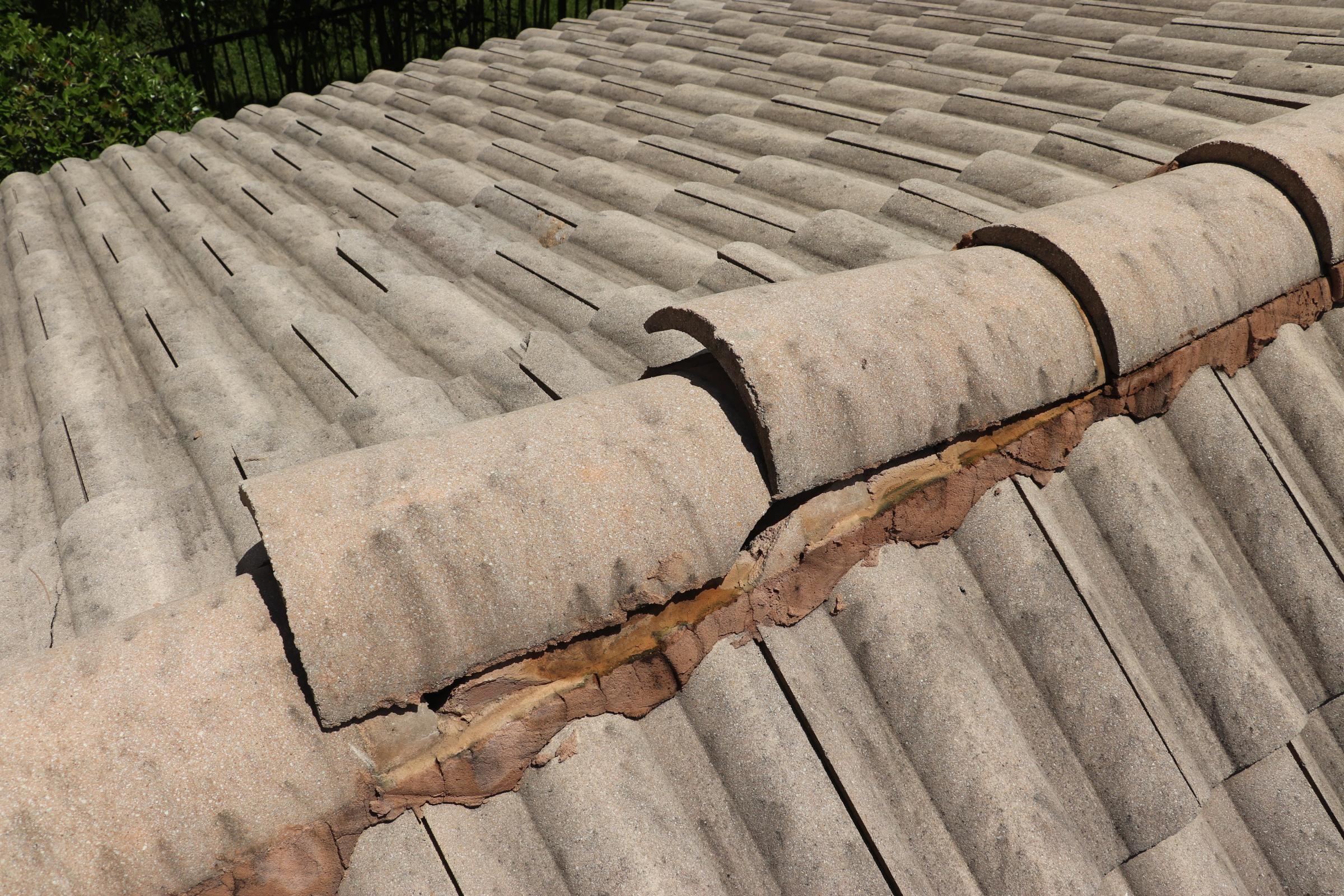
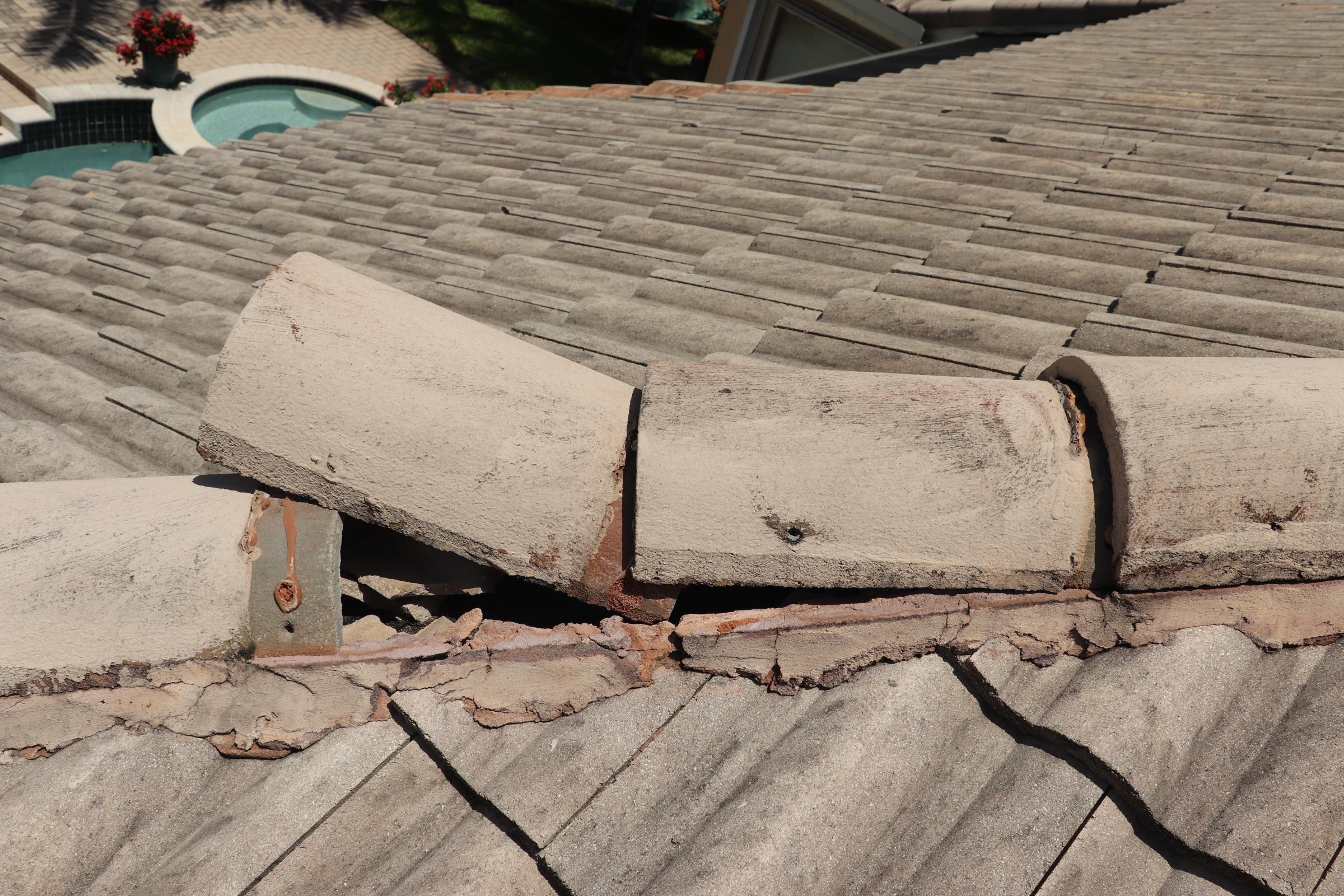
The detached ridge and hip tiles, observed in their original locations above, are a result of long-term wear and tear of the mortar used to attach the tiles. Had a wind strong enough to detach the tiles occurred, the tiles would have been displaced, and not set back in their original locations.
These examples are just a few that stress the importance of being able to properly identify the observed type of damage to concrete and clay roof tiles during an inspection. The ability to reach a clear and objective conclusion regarding the cause of damage is paramount in determining the next course of action.
About the Author
Sergio G. Arratia, P.E., M.S.C.E. is a consulting engineer with our South Florida and Orlando Offices. Mr. Arratia provides technical consultation related to construction evaluation of residential and commercial structures, failure analysis, evaluation of scope and cause of damage to structures, wind and hail damage assessment, water intrusion investigation, remediation analysis, structural load analysis, and structural design analysis. He is fluent in both Spanish and English and also provides services to Latin America and the Caribbean. You may contact Segio for your forensic engineering needs at sarratia@edtengineers.com or (954)743-4500.
Learn about how EDT Forensic Engineering & Consulting approaches construction assessments, scope of damage, and forensic engineering by assigning a file today.

